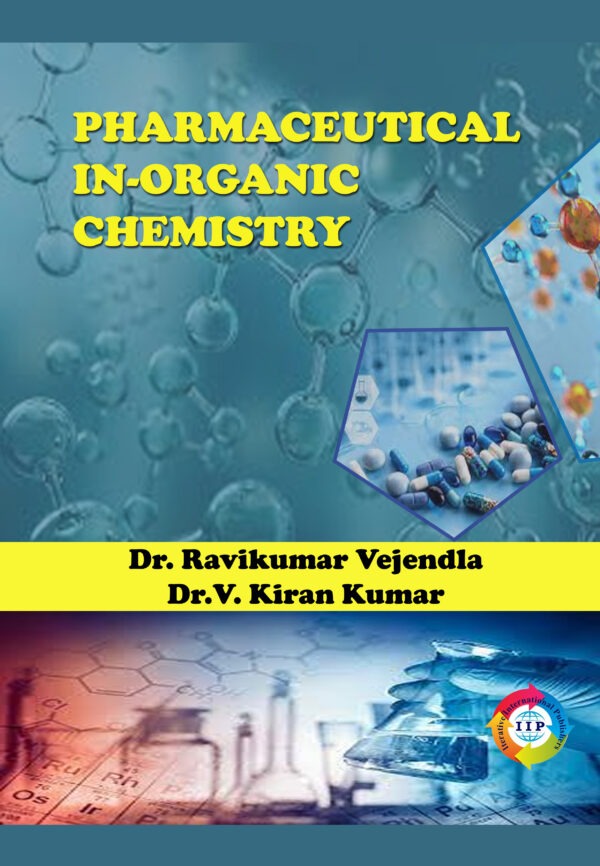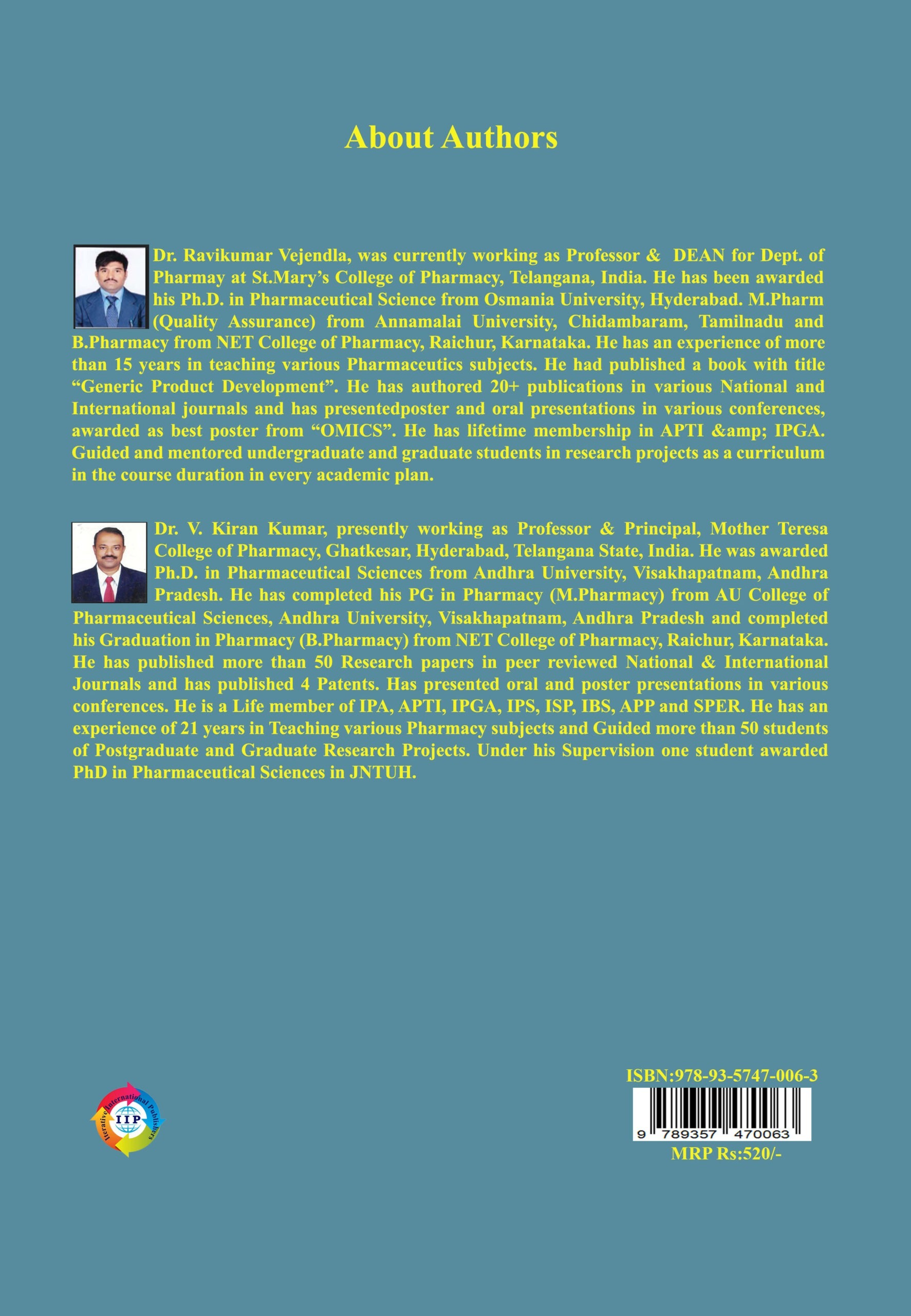This book aims to provide a broad idea on Pharmaceutical In-organic Chemistry for the importance of pharmaceutical product and formulation assay process. The book is useful to explain the fundamentals of this subject.Pharmaceutical Inorganic chemistry is the study of elements and their compounds; except carbon and its compounds which are studied under Organic chemistry. However, the distinction between the organic and inorganic is not absolute, and there is much overlap.
Inorganic compounds – The compounds which are synthesized by the geological systems and lack hydrocarbon (carbon-hydrogen). In other words, we can say that organic chemistry is chemistry deals with molecules containing Carbon & Hydrogen and hence inorganic chemistry is chemistry that deals with the compounds or molecules which lack carbon atom.
Inorganic compounds are found multitasking as bimolecular: As electrolytes (sodium chloride). The Study of pharmaceutical applications of the inorganic compounds led to the establishment of a new avenue called Pharmaceutical inorganic chemistry, which deals with the study of both non-essential and essential elements about their preparation, standards of purity, test for identification, limit tests to be performed for determining the quality and extent of purity, storage, different formulations and their storage conditions and therapeutic uses. Percentage purity of compounds can be determined by volumetric titration methods have be discussed in detail, for calculation of observed values to be evaluated in correct way without any errors so explained about errors come across and how to correct it.
Inorganic pharmaceuticals are useful in any of the following ways.
- Medicinal gases. Example: oxygen, anesthetic gas, etc.
- To acidify or alkalize body fluid. Example: Antacids, alkalis, mineral acids.
- Replacing or replenishing the normal content of body fluids. Example: Sodium, potassium, calcium, chloride, phosphate etc.
- Trace elements useful for our body. Example: Zinc, Magnesium, cupper, etc.
- Therapeutic purpose; for example: antimicrobials like Sodium benzoate, etc.
- Pharmaceutical aids. Example: Dibasic calcium phosphate, talc etc.
- Radio pharmaceutics. Example: sodium chromate
This book was prepared as per PCI syllabus. In particular, this book can be very useful to pharmacy and professionals interested in this area. Hopefully, the chapters presented in this book have just done that.









Reviews
There are no reviews yet.